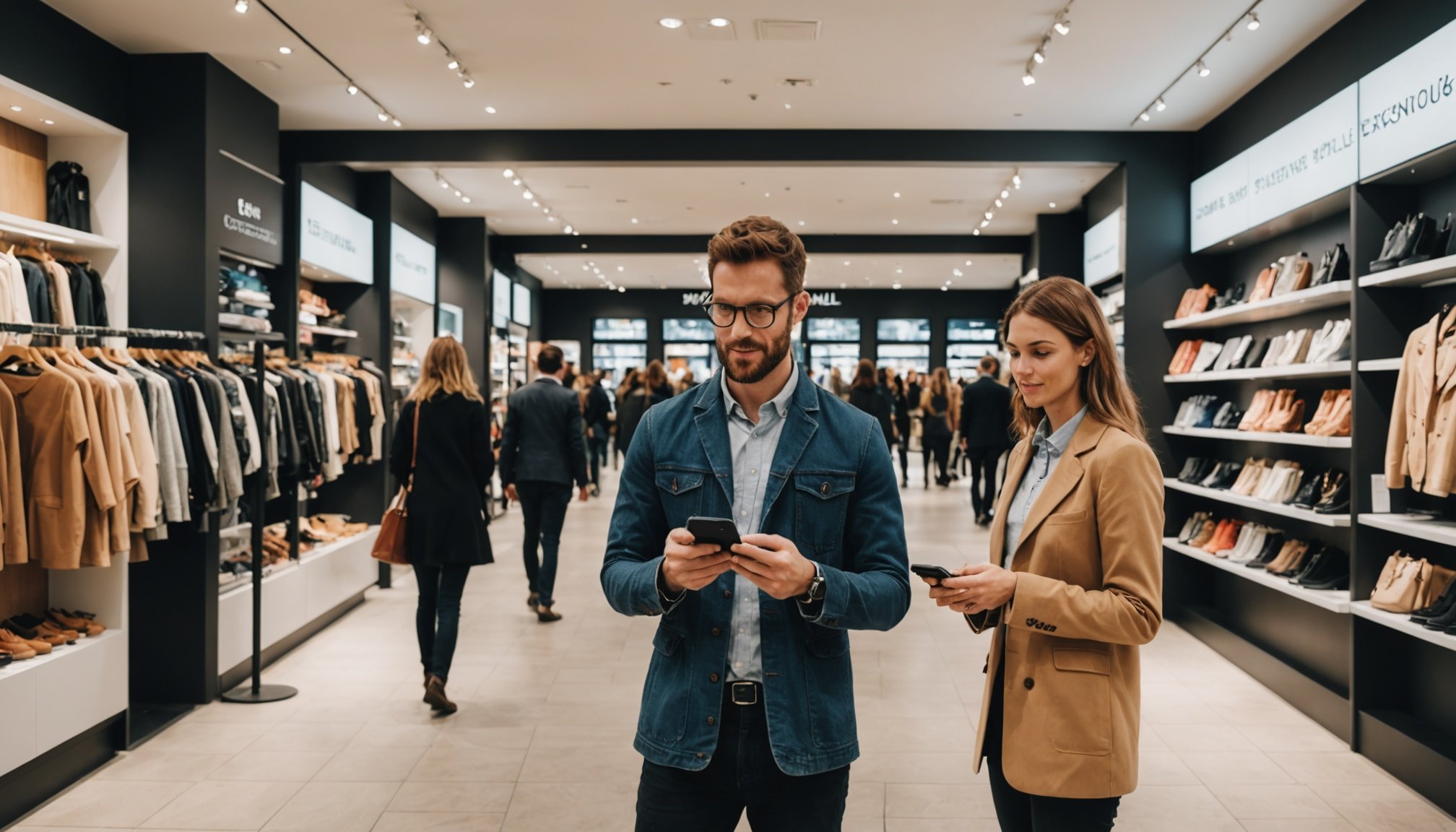Understanding Visual Search Technology
Visual search technology is a groundbreaking tool reshaping the landscape of retail innovation. Instead of relying on text-based queries, this technology uses images as inputs, enabling consumers to search for products by simply snapping a picture. Integrating artificial intelligence, it accurately identifies and matches the components of the image to relevant items within a retailer’s database.
This innovation has been gaining momentum in the UK retail sector, offering a fresh and interactive shopping experience. The key components of visual search include image recognition software, machine learning algorithms, and vast product databases. As users upload an image, these components work together to identify visual elements, understand patterns, and generate search results that closely match the original picture.
Have you seen this : Elevate guest loyalty: innovative strategies for uk hotels to foster lasting connections
Compared to traditional search methods, visual search provides a more intuitive and direct approach. While text searches depend on keywords and user knowledge of the product, visual search eliminates these barriers, reducing the need for precise descriptions. This makes it particularly appealing in fashion and home décor where visual detail is paramount.
Retailers in the UK are increasingly adopting this technology, recognising its potential to attract tech-savvy consumers and improve their overall shopping experience.
Also to read : Maximizing travel potential: harnessing data analytics for uk agencies to elevate travel package offerings
Impact of Visual Search on Customer Experience
Visual search is revolutionising the way customers interact with products, significantly enhancing the customer experience. By allowing shoppers to search using images, visual search personalises the shopping journey, making it more intuitive and engaging.
Imagine taking a picture of a product you admire and immediately receiving suggestions on where to buy it or find similar products. This capability streamlines the purchase process and boosts customer engagement. Shoppers no longer wade through endless text-based searches; instead, they connect directly with products of interest, heightening satisfaction and loyalty.
Beyond convenience, there are tangible benefits. Studies indicate that visual search can increase conversion rates by up to 30%, transforming curiosity into transactions. This substantial uptick underscores visual search benefits, positioning it as a critical tool for retail enhancements.
Retailers leveraging visual search not only meet consumer expectations but also surpass them, tailoring every step of the shopping journey to individual preferences and needs. As technology progresses, the seamless integration of visual search in e-commerce will likely set a new standard in placing unique products in the buyer’s visual context.
Real-World Applications of Visual Search in UK Retail
In the fast-paced world of UK retail, visual search technology is transforming how consumers engage with products. The implementation of visual search has led to notable successes in the industry.
Successful Case Study: Retailer A
Retailer A embraced visual search to enhance the customer shopping experience. By deploying an intuitive photo-based search, customers could easily find products by taking images, dramatically streamlining the process. This implementation increased customer engagement, as it simplified the search journey, minimising frustrations related to inaccurate search results.
Successful Case Study: Retailer B
Retailer B saw a significant shift by integrating visual search into their online platform. Feedback indicated an improvement in customer satisfaction due to faster product discovery. The case study highlighted a decrease in bounce rates, suggesting users spent more time exploring products.
Successful Case Study: Retailer C
Retailer C’s venture into visual search revealed crucial insights. Their implementation of visual search tools led to higher conversion rates. Customer responses showed an appreciation for the technology’s ability to suggest visually similar products. This interaction not only improved sales but enhanced user experience overall, offering valuable lessons learned for the sector.
Challenges and Considerations for Implementation
Visual search technology holds promising opportunities for retailers, but it comes with its own set of challenges. One major hurdle is the technology barriers that can occur during adoption. Retailers may experience difficulty integrating this advanced technology into existing systems. Additionally, compatibility issues can arise, complicating the implementation of visual search solutions.
The cost considerations linked to implementing visual search technology also need careful attention. Retailers have to allocate resources judiciously in terms of both financial and personnel investments. This involves budget planning for purchasing or developing the necessary technology and infrastructure. Furthermore, maintaining these systems requires ongoing support, which adds to the cost.
Training staff is another critical aspect that should not be overlooked. Employees must be well-versed with the visual search tools to effectively guide customers and handle any technical issues that may arise. Retailers will benefit from educating consumers on using visual search, ensuring they fully understand its capabilities.
By addressing these challenges, retailers can bridge the gap and lean towards a more seamless integration of visual search technology. Awareness and preparation around these factors can significantly enhance the efficiency of this transformative technology implementation.
Expert Insights and Opinions
Industry experts predict that visual search in retail is set to revolutionize shopping by offering a more personalized, seamless experience. According to Sherry Wu, a leading voice in retail innovation, visual search enables consumers to discover products effortlessly by enhancing the connectivity between digital browsing and in-store experiences. Wu emphasizes the potential for visual search to bridge the gap between digital and physical retail environments, ultimately transforming consumer interactions.
Market trends suggest a significant shift towards integrating visual search technologies with other digital retail strategies such as augmented reality (AR) and artificial intelligence (AI). This integration aims to streamline the consumer journey, making it more intuitive and engaging. Experts like James Lin, a visual search specialist, envision a future where AR-enabled visual search assists shoppers in virtually trying on products before purchasing, improving customer satisfaction and reducing return rates.
Thought leaders in the field highlight the importance of combining visual search with sophisticated AI algorithms to refine product recommendations, offering retailers deeper insights into consumer preferences. This strategic fusion of technologies is seen as a key factor in enhancing overall retail efficiency and personalizing the shopping experience in unprecedented ways.
Future Prospects of Visual Search in Retail
As retail enters a new era, visual search technology emerges as a pivotal player paving the way for innovation. The steady evolution of this technology is reshaping how consumers interact with retail environments. An exciting future trend is the integration of AI and machine learning capabilities, elevating the precision and utility of visual search tools. Imagine a seamless shopping experience where AI understands consumer preferences and makes tailored recommendations instantly.
To remain competitive, retailers need to adopt a proactive approach to this technology evolution. Identifying where innovation can best serve their unique customer base is key. Retailers should focus on:
- Leveraging AI-driven insights to predict consumer behaviour
- Continuously updating their platforms in line with technological enhancements
- Fostering partnerships with technology providers specialising in visual search
The retail innovation roadmap should prioritize incorporating these advancements to benefit from increased customer engagement and sales. By doing so, retailers can enhance the shopping experience and remain relevant in a competitive market landscape. Investing in these future prospects will position businesses to harness the full potential of visual search technologies as they continue to evolve.











